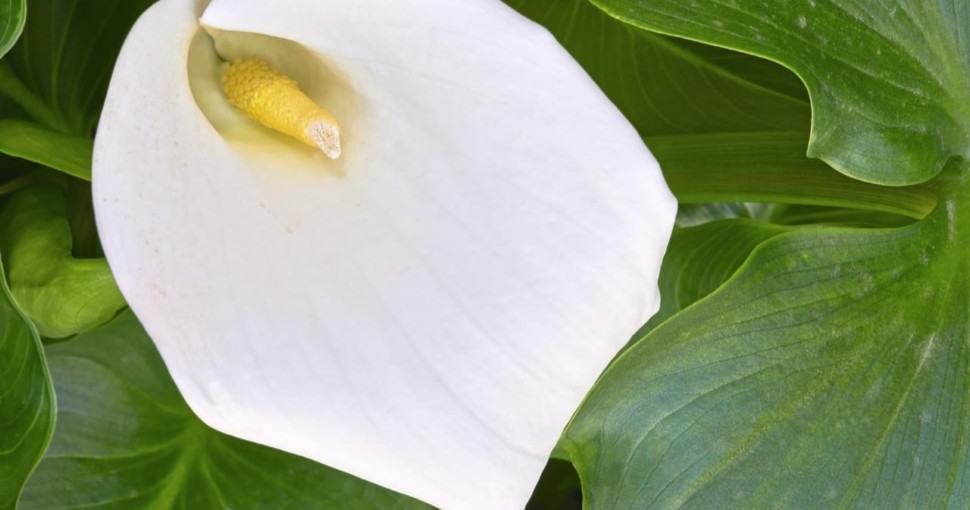Although a peace lily is not a true lily, many still love the flower because of its hood-like, exotic and graceful white shape situated against the deep green foliage. With magnificent glossy leaves and pure white blooms, it’s no wonder its striking appearance is searched for in other flowers.
Contents
The peace lily, whose genus is Spathiphyllum, is a species native to the shade woodland floors of tropical regions in the America and some regions of Asia. It could be categorized as a herbaceous perennial. Additionally, it belongs to the Araceae plant family.
Philodendrons, Dieffenbachia, Anthurium, etc., are also members. The name, peace lily, is derived from a combination of Greek words: phylum, meaning leaf, and spathe, which describes an altered leaf and is frequently referred to as a bract.
The wide white portion that encircles a wavy, rod-like structure of a peace lily is known as the spathe. The spadix comprises numerous little cones, each with a tiny flower at the end. They require very little maintenance. It is a typical indoor houseplant that can withstand little light.
Related: 10 Peace Lily Plant Benefits | Are Peace Lilies Poisonous?
Plants That Have A Similar Look To The Peace Lily
One of many all-time favorite plants is the peace lily. Its ease of growth and attributes make it the ideal first indoor plant and the ideal gift. It not only brings greenery indoors, but this plant also works well as a purifier. Here are some flowers that look like peace lilies.
1. Flamingo Flower (Anthurium Andraeanum)
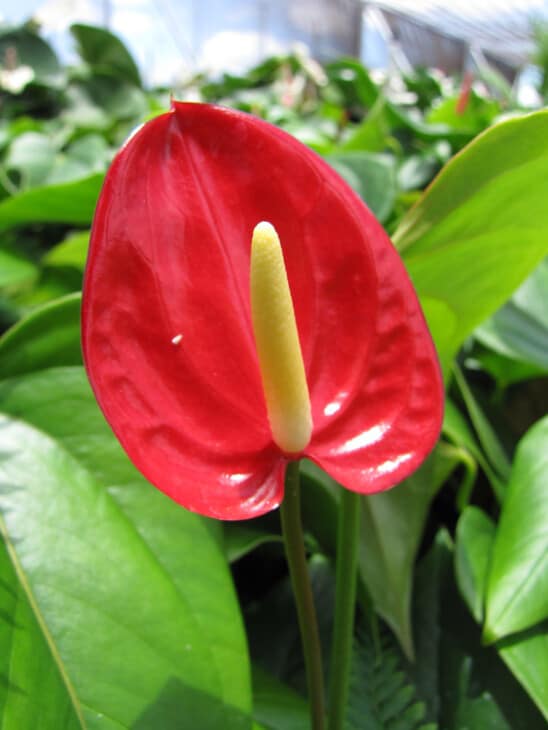
The Flamingo Flower, sometimes called Anthurium, is a gorgeous indoor ornamental plant. This plant belongs to a genus that has about 1000 flowering plant species. Anthurium Andraeanum is its botanical name. This plant also goes by the common name Tail Flower, a combination of the Greek words anthos and oura.
Oura, which translates to tail, refers to the spadix. As the flowers of the peace lily are formed on an inflorescence known as a spadix, this is where the two plants look similar. This plant is relatively short, with heart-shaped leaves and vibrantly colored spathes in all kinds of shades.
All parts of the Flamingo Flower plant are poisonous to both humans and pets. To encourage blossoming, Flamingo Flowers prefer indirect, bright sunshine. Additionally, Anthuriums are far more water-tolerant, making them ideal plants for those that require a reasonably low-maintenance plant.
2. Pothos Plant (Epipremnum aureum)
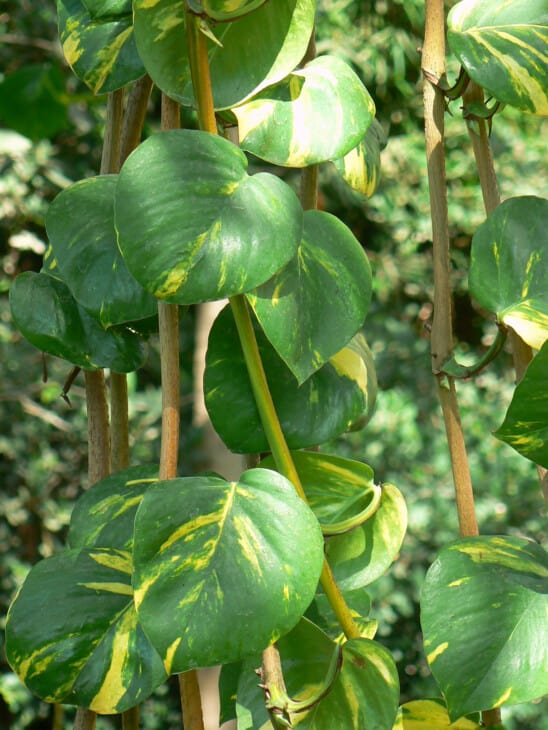
Epipremnum aureum, another name for Pothos, is a low-growing, vining species that is quite simple to grow and care for. It has vines that can grow up to about 10 feet long with a height of about 18 inches.
When it comes to their green leaves and shape, Pothos and Peace lily plants are similar, especially when the Pothos plant is still growing. Pothos is a stunning evergreen plant. The leaves of this plant tend to be much larger and less heart-shaped when grown outside in a mild environment.
Like many Aracea blooms, the flower starts as a spike, unfolding into a hood-like shaped spathe resembling a peace lily. Because it is so difficult to destroy, this plant is among the most popular indoor plants. Pothos can withstand changes in watering and does well in low light.
3. Dumb Cane (Dieffenbachia)
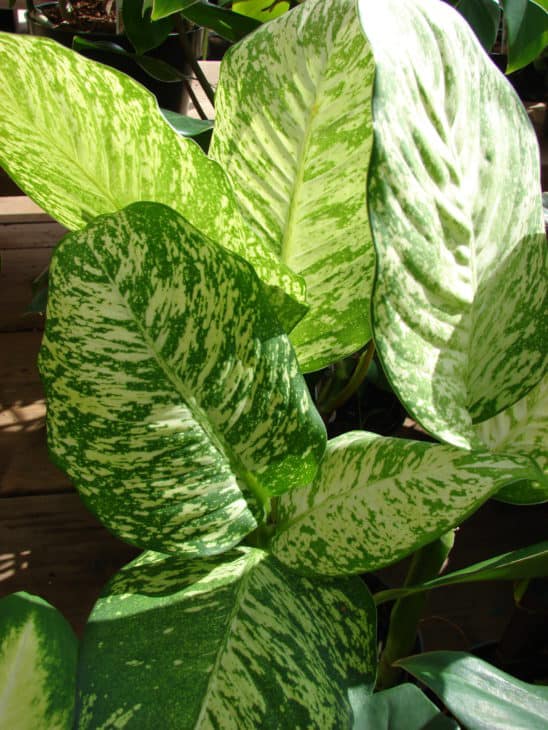
Dieffenbachia has some traits that make them easy to mistake for other plant species. One such plant is the peace lily. Dieffenbachia plants end up resembling peace lilies when they bloom. The tropical plant Dieffenbachia is native to South America and favors warm, humid weather with indirect lighting.
Cane, on the other hand, refers to the center woody stalk of a Dieffenbachia, which resembles sugarcane or bamboo. Dieffenbachia leaves typically have an ovate form with pointy tips, and their color range can include both darker shades of green together with lighter shades of yellow or milky white.
They grow tiny flowers clustered along a distinctive structure known as a spadix, much like the peace lily. Although the Dieffenbachia plant grows to be much larger with much bigger leaves, it retains similar-looking leaves and blossoms as a peace lily.
4. Heart Leaf Philodendron
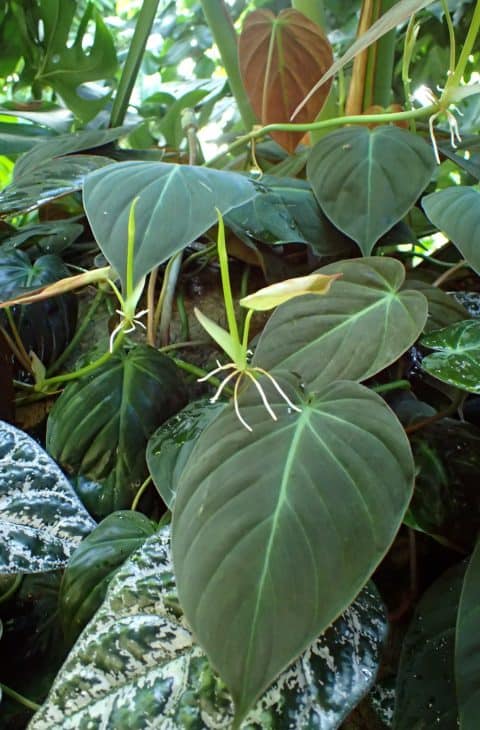
Aptly named the Heart Leaf Philodendron, thanks to its heart-shaped leaves, and often called the Sweetheart Philodendron, this isn’t a plant you would think would look like a peace lily. Think again, as the heart leaf plant resembles the peace lily when in full bloom.
When cultivated indoors, this type of philodendron rarely blooms. However, when they bloom, a yellow-green spathe encircles a spadix crowned with small white flowers. Green, heart-shaped leaves of this philodendron usually measure two to three inches across. They can get much bigger outside.
Indirect light is the ideal place for the Heart Leaf Philodendron. It requires little maintenance and will survive for a few years in a small pot. Despite being a lovely evergreen plant with tropical origins, it tolerates dry air and even enjoys the occasional misting.
5. Pig-Tail Anthurium (cherzerianum)
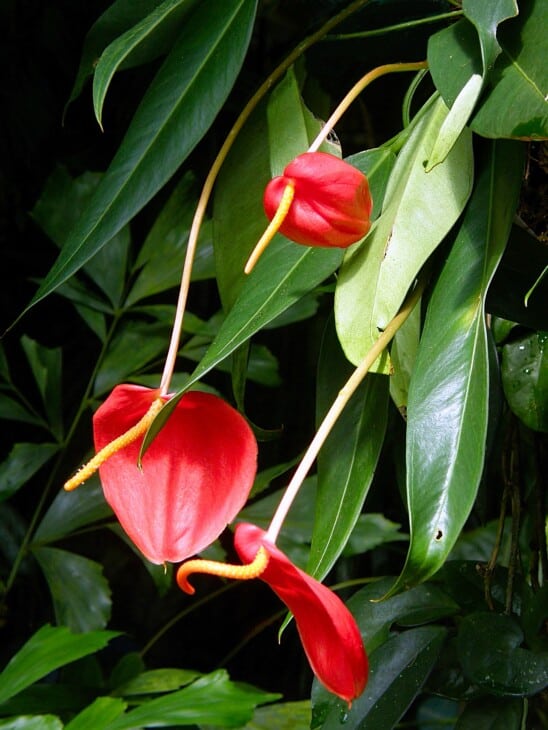
It is not surprising that another Anthurium resembles the peace lily, given the variety of Anthuriums that exist. Scherzerianum, sometimes known as Pig-Tail Anthurium, is a lovely species of Anthurium that blooms pink, orange, and even red flowers instead of the elegant white that peace lilies produce.
This wildly well-known plant resembles a peace lily in appearance but with one striking characteristic that sets it apart from the peace lily and the Flamingo Flower. The spadix of this plant distinguishes it from the peace lily.
This plant doesn’t have a vertical spadix like the peace lily or Andraeanum; instead, it has a curly one. The leaves are also typically smaller, albeit long, lance-shaped, and narrow to a point.
6. Cast Iron Plant (Aspidistra elatior)
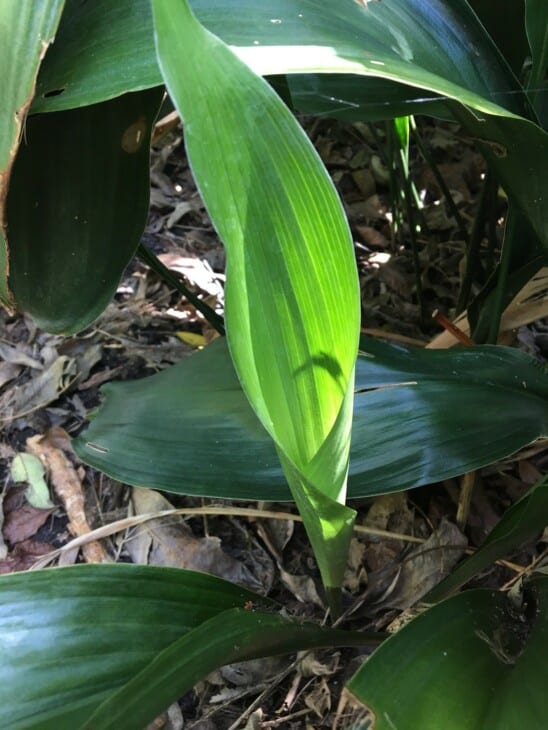
The cast iron plant is another name for Aspidistra elatior, its botanical name. This plant has been grown in unheated, chilly, and drafty regions since the Victorian era. It looks similar to the Peace Lily but is less elegant thanks to it being considerably hardy.
Its leaves aren’t particularly waxy or shiny, although they are an unwavering deep green. It is undoubtedly one of those plants that can survive being neglected. It thrives in hot, arid areas and struggles in cooler ones.
The strength and hardiness of cast iron plants are reflected in the name. This plant most closely resembles the Peace Lily in terms of leaves but lacks blossoms. Although the leaves resemble Peace Lily very closely, they are not as oval-like. These grow faster than peace lily flowers.
7. Monstera Deliciosa
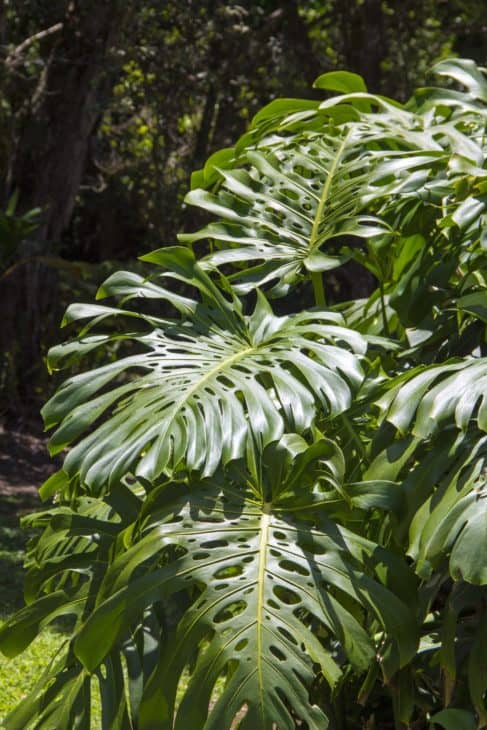
The Monstera Deliciosa is a popular indoor plant. Usually cultivated for fruit and flowers. This flower consists of a thick, upright spadix featuring a boat-shaped spathe surrounding its small blossoms. This is similar in appearance to the peace lily.
Enormous, off-white blossoms of this plant are between 8–12 inches long. The spadix of a Monstera plant is made up of many berries initially protected by a waxy spathe. They fall off the fruit as it ripens.
Monstera is sensitive to cold temperatures and is only found in rainy woods in southern Mexico and parts of Costa Rica, etc. Grow this stunning plant in a climate-controlled conservatory in order to replicate the precise conditions these places have for blooming.
Are Plants That Look Like Peace Lilies In The Same Family?
The plants mentioned above that all look like peace lilies are in the same family. They are monocotyledonous flowering plants belonging to the Araceae family. All bear their flowers on an inflorescence known as a spadix. A spathe typically accompanies the spadix and occasionally somewhat surrounds it.

